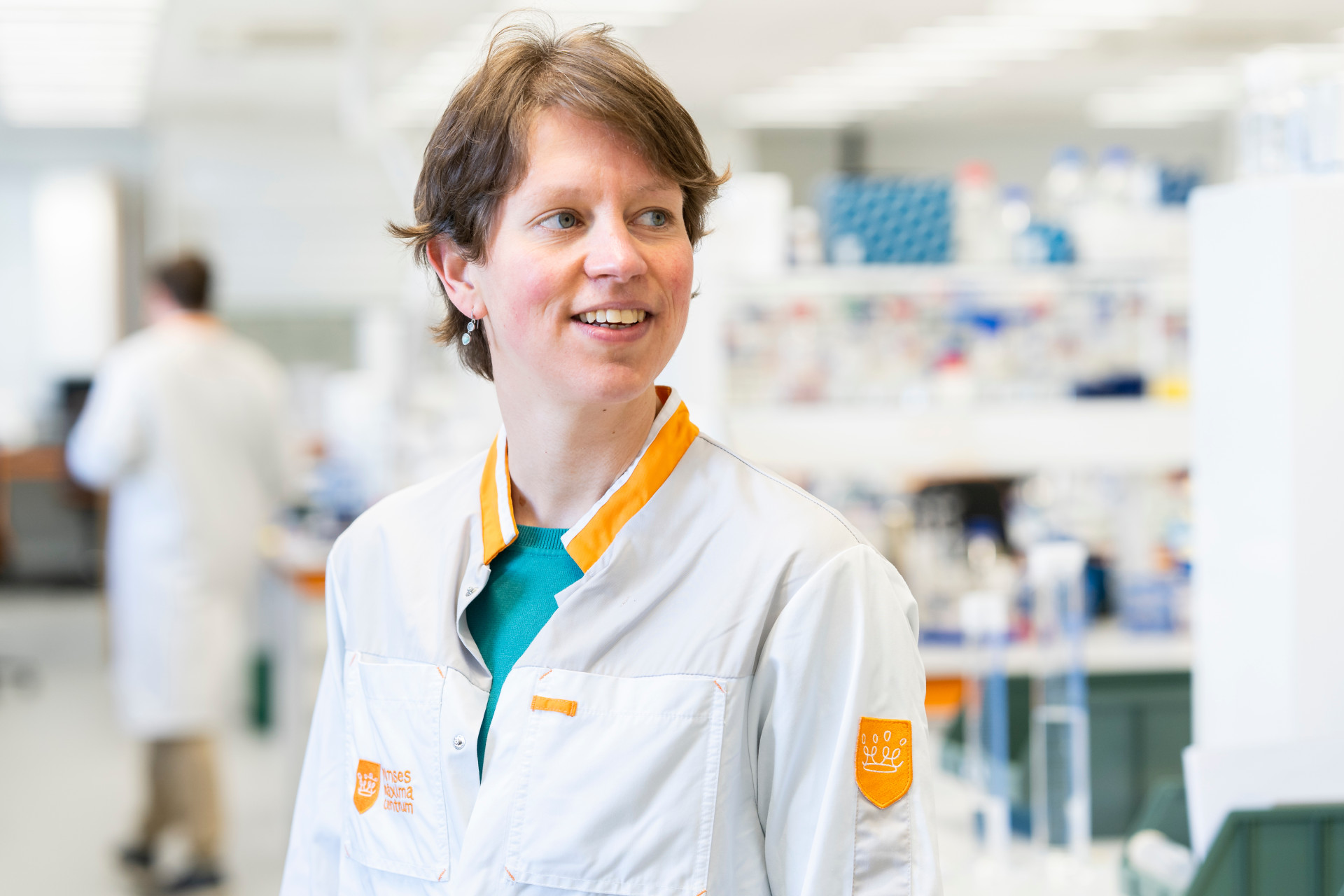Blood consists of many different cells. All these different cells are made by stem cells in the bone marrow, in the interior of the bones. These are more than a trillion a day. In children with leukemia, blood cancer, there is something wrong with the blood production. Leukemia cells divide and grow unrestrained, leaving no room for healthy blood cells. For some children with leukemia, the best treatment is a bone marrow transplant, or stem cell transplant.
Blood production
‘In a bone marrow transplant, we replace the child's diseased bone marrow with stem cells from the bone marrow of a healthy donor,’ says Dr Mirjam Belderbos, pediatric oncologist and research group leader specialized in stem cell transplantation. ‘If all goes well, the new stem cells will once again form a healthy blood factory in the bone marrow. But we only find out whether the transplant has been successful once healthy blood production has returned. We don't yet fully understand what exactly happens in the bone marrow after a stem cell transplant.’
That is important to know, explains Belderbos, because a stem cell transplant is not successful in all children. ‘In a small proportion of children, the stem cells do not develop into new blood cells. And there are children whose leukemia comes back, despite the stem cell transplant.’
Mapping cells
Belderbos has now received a research grant from the European Research Council (ERC), a prestigious funding program of the European Union. She will use the funds for her line of research to gain a better understanding of exactly how a stem cell transplant works. ‘Nowadays there are advanced techniques to map out tens of thousands of single cells at the same time. We want to use these techniques to analyze the stem cells in their own environment, the bone marrow. We do this at different times after stem cell transplantation. We will also compare between successful and failed transplants.’
In the research, the Belderbos group will closely monitor the stem cells and their development into blood cells. They will use material from children with cancer in the Máxima’s Biobank, as well as that of children taking part in a clinical study. They will look at the cells in different phases, early and late after transplantation. The researchers will look closely at the RNA and proteins in these cells. This allows them to study whether a stem cell is dividing successfully, or is attacked by the immune system. With this, the researchers hope to gain a better understanding of how successful stem cell transplants work. They could also find starting points for improving stem cell transplants.
Proud
Belderbos is extremely proud of the grant and of the members of her research group. ‘As a young group leader, it feels great to receive this grant. It is very cool to hear that an internationally renowned awarding committee sees the potential of our work. The application was a team effort, so the enthusiasm and recognition from the ERC is great support for our research to improve stem cell transplants for children with cancer.’
Dr Mirjam Belderbos receives an ERC Starting Grant worth €1.5 million. This funding is intended for early stage research group leaders to develop their own independent line of research. Belderbos will use the support to retain and attract talented people to her team, and to fund single cell sequencing and data storage.


